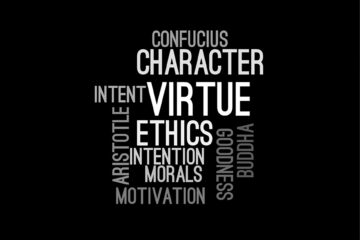![]()
Introduction
What does it mean to own something? The term “property” is frequently used to refer to anything that a person owns. Property can also be defined as something whose ownership rights can be extended. As a result, a property can encompass both living and non-living things. Although property might have many diverse meanings, the right of ownership is a common thread that runs through them all. Property has become a barometer of one’s success. As a result, it is critical to comprehend property law in the context of jurisprudence.
Meaning
The term “property” does not belong in the realm of art. It’s been utilised in a number of ways.
Property, in the broadest sense, refers to a person’s legal rights, regardless of his or her description. According to the law, a man’s property is all that belongs to him. Although it is currently fashionable, such a use of the term may be found in many old texts.
In a more limited definition, property refers to a person’s proprietary rights rather than his rights. Personal rights encompass his status or personal condition, whereas proprietary rights cover his estate or property. Only land, chattels, shares, and debts, not his life, liberty, or name, are considered personal property in a narrower sense.
Another definition of property, on the other hand, includes only those rights that are both proprietary and genuine. Property law is the law of in rem proprietary rights. A freehold or leasehold estate or copyright, according to this understanding, also incorporates the concept of property.
The property encompasses nothing more than corporeal property or the right of ownership over material things in the strictest sense.
Property, according to Austin, can have different meanings at different periods. It could refer to the most extensive rights of enjoyment recognised by law, excluding servitudes, or it could refer to life interests or even servitudes. It could be a person’s entire portfolio of assets, including both in-rem and in-personam rights.
Intellectual property, often known as intangible property, has become increasingly essential in recent years. Copyright, trademarks, design property, and patents are examples.
Kinds of Property
Corporeal Property
Because it has a physical reality, the corporeal property is also known as tangible property. It has to do with tangible things. The broad, permanent, and inheritable right of ownership of a material thing belong to the user of the property or thing. Furthermore, the corporeal property can be classified into two groups:
Movable
Chattels, such as leases, cows, and clothing, are examples of transportable property. It simply refers to all non-immovable physical property.
Immovable
Immovable property, such as land, is an example. An immovable piece of land, according to Salmond, has numerous elements tied to it. It includes the ground under the surface as well as the world’s centre. Surprisingly, it also encompasses the infinite column of space above the surface. The owner of a piece of land also owns the area above it, according to the German Civil Code. The Air Navigation Act of 1920 protects and governs the right to free and harmless occupation of space at a suitable height over land.
“Immovable property” is defined as “land, profits emanating from the land, and items attached to the earth,” according to the General Clauses Act of 1897.[1]
Real and Personal Property
The distinction between mobile and immovable property is comparable to that between real and personal property. The sliver of a connection that exists is historical rather than logical. All legal rights to land are referred to as real property. Personal property, on the other hand, refers to all other proprietary rights, whether in rem or in personal.
Incorporeal Property
Intangible property is incorporeal property. Intellectual or conventional property are two more phrases that are regularly used. It encompasses all valued interests that are or could be protected by legislation. In recent years, the need to recognise and safeguard incorporeal property has become apparent. The term “property” has broadened its definition to cover virtual property as well. In current times, a considerable portion of a country’s property is held in the form of corporate shares. Furthermore, there are two types of incorporeal property: rights in re propria and rights in re aliena.
Rights in re propria[2]
The right of ownership in one’s property is not exercised over material items under this type of right. Property law is concerned with material goods in general. There are, however, exceptions in the form of non-material goods created by human abilities and labour. Patents, trademarks, creative copyright, commercial goodwill, and other intellectual property are among the most valuable.
A new form of intangible property was added to the list by Holland. “With such intangible property should undoubtedly be classified those royal privileges subsisting in the hands of a subject, known in English law as franchises, such as rights to have a fair or market, a forest, or a free fishery,” he writes.
Rights in aliena[3]
Encumbrances are the name given to these rights. These are rights in rem over regions of property owned by another person, to put it another way. These rights run concurrently with res encumbered. They link the res to anybody it may travel through. These obstruct the owner’s ability to exercise certain specific property rights. Lease, servitude, security, and trusts are the most common types of encumbrances.
- Lease: A lease is an encumbrance that grants the right to possess and utilise another person’s property. It is the transfer of a right to use a certain piece of property.
- Servitude: Servitude is a type of encumbrance that consists of the right to a limited use of land without really owning it. Servitudes include the right of way over someone’s land, the right of light and air, and so on.
- Security: “A possession such that the grantee or holder of security possesses against the grantor a right to resort to some property or some money for the fulfilment of some demand, after which the balance of the property or funds belongs to the grantor,” according to Lord Wrenbury.
A mortgage is a transfer of an interest in specified immovable property for the purpose of securing the repayment of money borrowed. A lien is a legal right to keep another person’s property as collateral for the execution of an obligation.
- Trust: An obligation attached to property ownership. Infants, lunatics, unborn children, and others are among the beneficiaries of the trusts.
Modes of Acquisition of Property
Possession, prescription, agreement, and inheritance are the four modalities of property acquisition identified by Salmond.
Possession
It is the accomplishment of ownership as a goal. Possession of a material object confers ownership rights. The de-facto relationship between a person and a thing is accompanied by the de-jure relationship. By way of ownership, he who claims a piece of land as his own and is also in possession of it makes it good in law. A person who is in possession of anything cannot take it away from him violently.
He must also seek legal assistance in order to protect his own rights. However, if a piece of property belongs to no one, the individual who captures and owns it has a strong claim against the rest of the world. It’s comparable to how the person who catches the birds in the air or the fish in the sea owns them.
Prescription
“Prescription may be understood as the effect of time passing generating and destroying rights; it is the operation of time as a varied effect,” according to Salmond. Positive acquisitive prescriptions and negative or extinction prescriptions are the two sorts of prescriptions.
Prescription does not apply only to in rem rights. It can be found in the realms of duties and property. Positive prescription is only conceivable when the rights in question allow for possession. The majority of these types of rights are in rem rights. Persona rights are frequently terminated by their exercise and cannot be possessed or acquired through prescription. The law of property and obligations frequently use negative prescription. The passage of time destroys the majority of commitments. Their ownership is incompatible with their possession.
Agreement
An agreement, according to Paton, is a communication between two or more people expressing a similar desire to modify their legal relationships. It is the result of a bilateral agreement. It could be in the form of a project or a grant. An assignment is a legal document that transfers ownership of existing rights from one owner to another. In contrast to the delivery of property, a grant denotes the assurance or transfer of property ownership.
Affirmation and registration of the deed are required in some agreements. There is a general rule that the transferee’s title cannot be better than the transferor’s by agreement. This is due to the fact that no one can transfer a greater title than the one he already holds.
There are, however, two exceptions to the rule:
- The transferee receives a valid title from a trustee who fraudulently sells the trust property, as long as the transferee buys it for fair market value and without knowledge of the beneficiary’s equitable claim.
- When one man has possession of something but another has ownership of it, the processor can transfer a better title in some situations based on the presumption that the possessor is the owner, as long as the transferee receives it in good faith believing him to be the owner.
Inheritance
Inheritance is another method of getting a property. Certain rights survive a person’s death and pass to his heirs and successors. Inheritable rights are those that a person can pass down to his or her descendants. Proprietary rights can be passed down through the generations. Personal rights, on the other hand, are normally not inheritable, however, there are exceptions to this rule.
A person’s property can be passed down either testate or intestate. It could be done with or without a will. In the absence of a will, succession occurs by operation of law. If no heirs are found, the property is given to the state.
Conclusion
Property is a source of power, labour, and, most significantly, it is considered the best and safest type of investment in today’s world. A property’s worth is always increasing. Knowing the value of the property makes it all the more crucial to understand the legal history, or jurisprudence, around it. It is said that law and property were born together and that they would die together as well.
These two elements are intricately connected. Property did not exist prior to the laws; remove the laws, and property will vanish. As a result, the property has been given significant weight in the legal system. For the reasons stated above, the purpose of this article is to assist the reader in developing a better understanding of property and its various components.
References
[1] The General Clauses Act, 1897 (indiankanoon.org)
[2] Concept of Rights and Duties Under Jurisprudence – iPleaders
[3] RIGHTS IN RE PROPRIA IN IMMATERIAL THINGS & RIGHT IN RE ALIENA “ENCUMBERANCES” – Advocatespedia



0 Comments